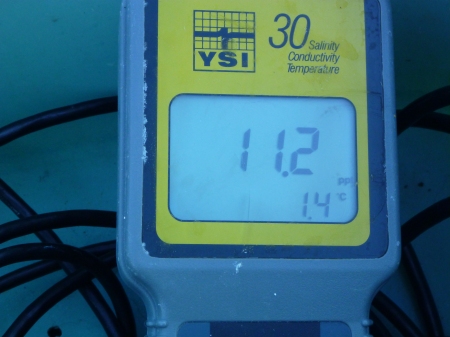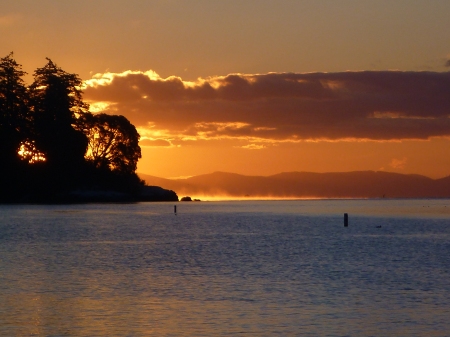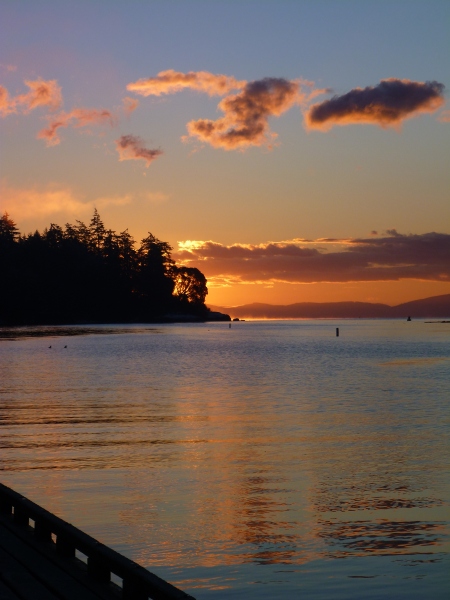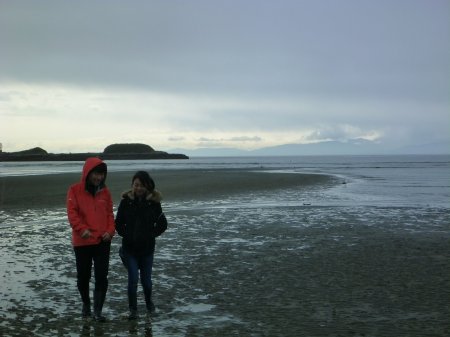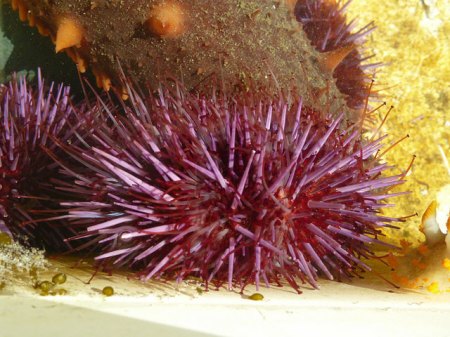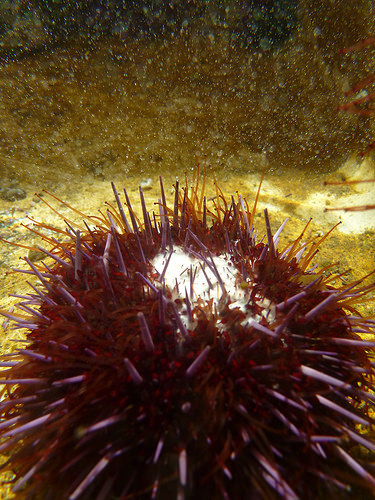After a very cold night, there was a layer of ice on Pedder Bay again this morning which allowed for some interesting observations and data collection by marine scientists.
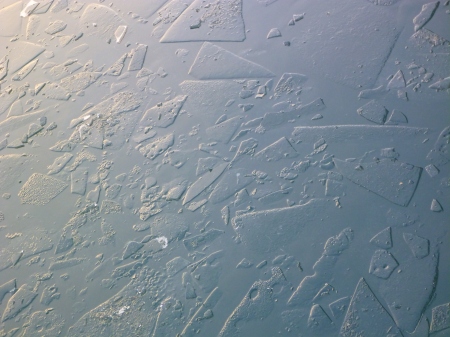
Data below were collected by second year Marine Science students at two different times of the morning.
| 8:05 | am | 11:00 | am | |
| Depth (m) | Temp (oC) | Salinity (ppt) | Temp (oC) | Salinity (ppt) |
| 0 | 3.7 | 28.4 | 4.6 | 25.9 |
| 0.5 | 5.8 | 29.3 | 5.8 | 30.1 |
| 1.0 | 6.4 | 30.3 | 6.7 | 30.6 |
| 2.0 | 6.7 | 30.6 | 6.7 | 30.7 |
| 3.0 | 6.7 | 30.7 | 6.8 | 30.8 |
| 4.0 | 6.8 | 30.7 | 6.9 | 30.8 |
| 5.0 | 6.8 | 30.7 | 6.9 | 30.8 |
One major conclusion can be drawn:
The water is COLD (right down to 5 m where we usually measure temperatures around 10oC). It is so cold that students’ tongues are turning blue:
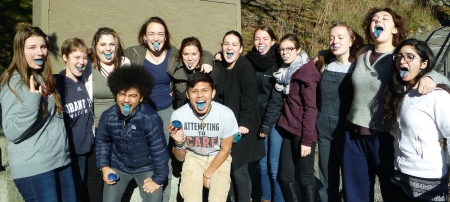
Wait a minute… the cold is not the reason for the blue tongues in these Biology students!
We are also experiencing big tides these days (2.8 m tidal range). High tides in the early afternoon:
Then low tides at night:

Emilio, Heather & Millie at low tide (20:15 11 Jan 2017)
Interesting times!






